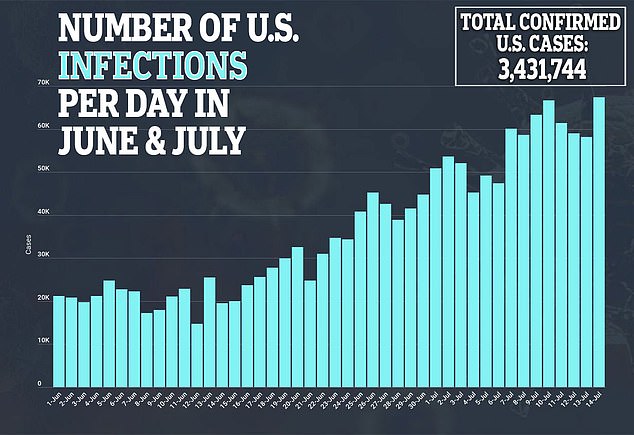One of the nation’s top health officials is warning that the novel coronavirus (COVID-19) could worsen in coming months.
Dr. Robert Redfield, director of the U.S. Centers for Disease Control and Prevention, spoke at a webinar for Journal of the American Medical Association, or JAMA, when he said Americans should brace for what will likely be a “difficult” fall and winter season.
“I do think the fall and the winter of 2020 and 2021 are going to be probably one of the most difficult times we’ve experienced in American public health because of … the co-occurrence of COVID and influenza,” said Redfield.
“Keeping the health care system from being overstretched, I think, is really going to be important,” he added. “And the degree that we’re able to do that, I think, will define how well we get through the fall and winter.”
The statement comes as 46 states reported more new cases of COVID-19 last week compared to the previous week, according to a Reuters analysis of data from The COVID Tracking Project.
New cases also continue to rise with the US reporting over 400,000 infections for the week ending July 12, which was up 21 percent from the previous seven days.
Nationally, new COVID-19 cases have risen every week for six straight weeks.
Cases are only falling on a weekly basis in New York, Tennessee, New Jersey and Delaware.
While Southern and Western states are seeing the biggest increase in cases, infections are also rising in the Midwest with Minnesota cases up 60 percent, Missouri up 40 percent and Iowa up 30 percent.
Meanwhile, more than 5,000 people died from COVID-19 between July 6 and July 12, which is an increase of 46 percent compared to the previous week.
Texas, Arizona and Mississippi reported the biggest weekly spikes in the deaths last week.
Until now, the number of deaths per day from COVID-19 had been falling for months even as hot spots states like Florida, Texas and Arizona saw explosions in cases and hospitalizations.
Health officials have been warning for weeks that deaths would surge again because the fatality rate lags several weeks behind infections.
A coronavirus death, when it occurs, typically comes several weeks after a person is first infected.
Experts had predicted states that saw spikes in cases and hospitalizations would, at some point, see deaths rise too.
The impact of the new surge in deaths has been felt by the healthcare workers grappling in overstretched hospitals with Texas and Arizona requesting refrigerated trucks as morgues reach capacity.
A forecast model from the University of Washington’s Institute for Health Metrics is predicting the death toll to rise to 208,255 by November 1.
Experts say the death toll may not be as bad as when the pandemic first hit because testing was extremely limited early on and that many people’s health behaviors have now changed with mask-wearing becoming more common in some places.
